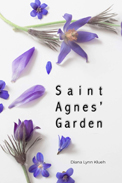
 |
Jodie Sealy and her mother live in Biloxi, Mississippi, with her maternal grandmother; however, things are not going well between the two women. So Jodie’s mother decides to relocate to Terre Haute, Indiana, a move that Jodie and her grandmother are dead set against. In fact, Jodie has just discovered her desire to become a teaching nun and wishes to pursue this vocation at her current school, Sacred Heart Academy. Jodie admires Sacred Heart’s nuns and wants to emulate them as “they were the most perfect ladies... never bothered with things that regular women had to worry about, like daddies or husbands who drank too much and acted ugly.” But it’s a losing battle for Jodie and her grandmother, and she finds herself in a strange new school where she must make new friends. Though some of the students at her new school, St. Agnes, make fun of her because of her strange accent, others like the way she talks. Before long, Jodie finds her way and discovers she likes her new life.
The story’s main character, Jodie, must navigate as the only child of divorced parents while attending a Catholic school. When she moves to a new region of the country, she must also deal with the preconceptions of those who initially think she must be ignorant because of her accent—including her teacher, who divides the class into two groups: the roses and the dandelions. The roses are the bright students, and the dandelions are the slower students. Even as a sixth-grader, Jodie realizes the audacity of dividing students into groups of weeds and flowers, and her sensibilities are insulted that one would do such a thing. Jodie comes to realize that even dandelions have a purpose and are perhaps even more spectacular than the singular rose.
Klueh’s book is inspired by The Story of a Soul, the autobiography of Saint Therese, the Carmelite nun known as the little flower. She draws especially from St. Therese’s quote concerning the differences in flowers: “The splendor of the rose and the whiteness of the lily do not rob the little violet of its scent nor the daisy of its simple charm. If every tiny flower wanted to be a rose, spring would lose its loveliness.” The author’s extended metaphor is played out within the pages of this book beautifully as Jodie encounters the different personalities in her new school and reflects on each through a stream of consciousness dialogue written in a delightfully entertaining voice.
This 1950’s coming-of-age story is well-written with a strong female protagonist who is precocious, insightful, and resolute. Young readers will enjoy Jodie’s personality and her keen sense of justice as she navigates sixth-grade life in a new environment. As she learns to accept the individuality of each new friend, as well as deal with students for whom she doesn’t especially care, Jodie grows in faith and psychological maturity, making this a relevant book for young readers. Many will relate to the obstacles which Jodie faces throughout the book, including her parents’ divorce and their relationships with other people, her first crush, and the racism expressed by one student toward another. Klueh does a wonderful job of taking the pulse of the era and creating an enduring character in Jodie. Readers of all ages will find much to enjoy here.